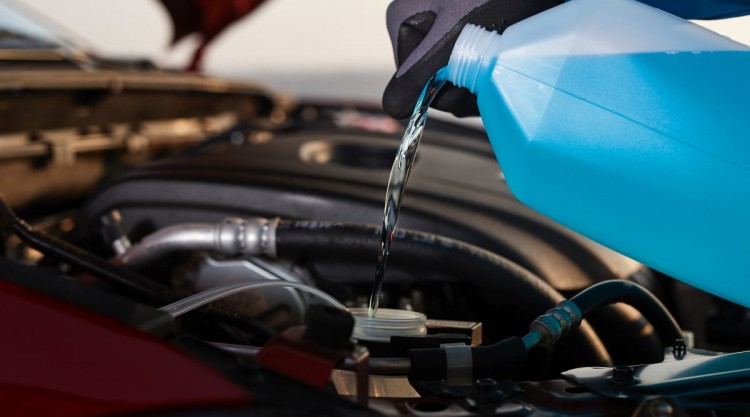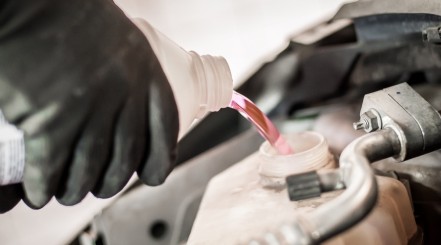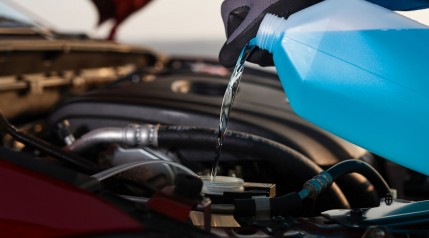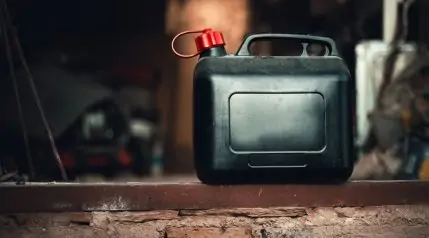
Our vehicles require a variety of fluids to function. Gasoline is the most obvious, but brake fluid, engine oil, transmission fluid, and antifreeze are a few important others.
All of these have become better over the years because of technological advancements. They have enabled vehicles to last longer, can be used for longer periods of time before you need to change them, and even condition engine parts to prevent wear and tear.
These fluids, however, are also toxic, and disposing of them in the right way is crucial for your own personal health, the safety of others, and the well-being of the environment.
Antifreeze, more commonly known these days as engine coolant, is among the most toxic chemicals the average motorist will ever come in contact with, and becomes a hazardous waste material as soon as it is mixed with motor oil or gasoline.
There are strict laws concerning the proper disposal of both pure antifreeze and contaminated antifreeze, and we’re here to tell you all about how to dispose of antifreeze the safe way.
Key Takeaways
- Highly Hazardous Substance – Coolant contains glycol additives, which are highly toxic and must be disposed of properly.
- Safe Disposal Is Simple – All you have to do is drain your coolant, pour it into sealed containers, place these in a sealable plastic garbage bag, and transport it to a local recycling center.
- Disposal and Recycling Centers – Check your city or state’s Department of Waste Management website for specific information regarding locations for safe disposal.
Contents (Jump to Topic)
- 1 Key Takeaways
- 2 What Is Antifreeze, AKA “Engine Coolant”?
- 3 Why Is It Important to Dispose of Antifreeze Safely?
- 4 How Do You Dispose of Antifreeze?
- 5 What Happens If There Is an Antifreeze Spill?
- 5.1 1. Equip Yourself with PPE
- 5.2 2. Spread Baking Soda, Sand, Kitty Litter, or Oil Spill Absorbent on the Spill Area
- 5.3 3. Cover the Spill Area and Absorbent Material in Paper Towels
- 5.4 4. Allow the Materials to Soak into the Paper Towels for 1–3 Hours
- 5.5 5. Gather the Soaked Paper Towels With Dry Paper Towels and Place All Materials in a Plastic Bag
- 5.6 6. Use Liquid Soap, Dish Detergent, or Laundry Detergent to Cover the Spill Area, and Scrub It With a Shower Brush
- 5.7 7. Rinse and Dry the Area with Water and Paper Towels
- 6 Are There Any Other Tips I Should Know About?
- 7 Wrapping It Up
What Is Antifreeze, AKA “Engine Coolant”?
It is a substance, often mixed with water, that is circulated through your vehicle’s engine to provide cooling to various components and allow your engine to start in cold conditions.
Without coolant, regular water would boil off during extreme heat or freeze during extreme cold, causing your engine to overheat or not run at all in cold temperatures.
The additives in coolant, mainly glycol, effectively raise its boiling point, lower its freezing point, and prevent corrosion within your vehicle’s radiator that pure water would normally cause.
Why Is It Important to Dispose of Antifreeze Safely?
Coolant is considered hazardous waste because of its glycol additives. For this reason, it’s imperative that you never pour antifreeze down the drain.
Most types have either an Ethylene Glycol or Propylene Glycol base. Ethylene glycol antifreeze is considered to be more toxic than propylene glycol antifreeze, but both are skin irritants and are harmful if ingested.
Pure antifreeze can often be recycled, but when it’s mixed with any amount of oil or gasoline, it is considered to be a hazardous material and must be disposed of in a different way at a special disposal facility.
Different jurisdictions have laws regarding the recycling and disposal of different types of toxic and hazardous materials.
Make sure you dispose of coolant correctly and according to the local laws of the jurisdiction in which you live, as not doing so could result in steep fines (or worse).
Inappropriate disposal can also lead to environmental damage.
For example, animals are often attracted to the sweet smell and taste of the glycol in many antifreezes. Ingesting it can be detrimental to both humans and animals, but it can also contaminate the ground and water supply if it leaks or is dumped inappropriately.
How Do You Dispose of Antifreeze?
Actually disposing of waste antifreeze is not difficult in and of itself, you just need to know what steps to follow. The difficulty comes with making sure it is contained and stays contained, then finding an appropriate disposal center to do all of this in.
1. Drain
Your car’s manual will tell you how to drain your coolant. In most cases, this will entail opening the coolant drain plug, and draining the fluid into a large drain pan.
2. Seal Old or Contaminated Antifreeze in a Labeled Container
Whenever you are transferring coolant to a container for transport, use a separate funnel for coolant than the ones you use for any other fluids, especially oil and gasoline.
Even the slightest bit of any one of these other fluids can contaminate coolant, making it a hazardous material and complicating the disposal process.
Any antifreeze container should be immediately sealed and labeled with the type it contains, disposal date, and a warning label. If it is tainted, make sure to label the fluid appropriately.
If not being disposed of immediately after filling, the container should be stored in a place that is out of reach for children and pets.
3. Check to See Where Used Antifreeze Is Accepted
The internet is always a good place to search for an appropriate antifreeze disposal center or recycling facility.
Jurisdictions vary drastically when it comes to disposal locations and laws, but you can usually check your city or state’s Department of Waste Management website for specific information regarding locations.
Many recycling centers will accept pure coolant, as it can be recycled (in some cases you can buy recycled antifreeze from these locations). Your local auto parts shop may also do the same.
If none of these places accept used antifreeze, your local mechanic or service station can usually point you in the right direction.
If the coolant is contaminated and has become a hazardous material, your local government laws and an internet search will usually show you exactly where and how to transport and dispose of it.
4. Transport the Antifreeze to the Appropriate Disposal Center
Once you put it inside labeled containers and a disposal center is located, you will have to transport the old antifreeze.
Make sure each container’s lid is sealed tightly. It can be helpful to tie down containers to prevent them from tilting or falling over.
You should also make sure to follow any guidelines your jurisdiction requires for transporting toxic materials.
Oftentimes, you can even find a qualified toxic material transporter who will deliver the coolant to the appropriate place for you. It might cost you some money, but doing this will also eliminate the possibility of an accident.
Once at the disposal location, make the handoff and request a receipt to show that all the proper guidelines were followed.
What Happens If There Is an Antifreeze Spill?
As with most fluids, a small leak or spill is inevitable, especially during the transfer process. With coolants, however, even the smallest spill is a big deal.
Let’s look at how you can clean up spilled antifreeze.
1. Equip Yourself with PPE
“PPE” stands for personal protective equipment.
For an antifreeze spill, gloves are absolutely necessary, as its additives are skin irritants. A mask is always helpful, especially in enclosed areas such as a garage, but isn’t necessary in all situations.
A long sleeve shirt and goggles are helpful if the spill is large enough, but they are not necessities for small spills.
2. Spread Baking Soda, Sand, Kitty Litter, or Oil Spill Absorbent on the Spill Area
Absorbing and containing it will need to be a top priority.
Absorbent materials such as kitty litter, baking soda, or sand will all do the job. Oil absorbent is better as it is more specifically designed for toxic fluids, but many will not have this readily available.
Oil-Dri, as it is often called, can be purchased at most automotive shops or large retail stores.
3. Cover the Spill Area and Absorbent Material in Paper Towels
After you have applied the absorbent material over the spill, lay down paper towels over the affected area.
This will allow both the coolant and absorbent material to be absorbed and removed from the floor or ground.
4. Allow the Materials to Soak into the Paper Towels for 1–3 Hours
To allow appropriate levels of absorption, allow the paper towels to rest for a minimum of one hour and a maximum of three hours.
If let alone for too long, the paper towels may become saturated, allowing toxic fumes to penetrate the absorbing materials and get into the air.
5. Gather the Soaked Paper Towels With Dry Paper Towels and Place All Materials in a Plastic Bag
Once the appropriate time has elapsed, use another layer of dry paper towels to pick up the saturated paper towels, and place them in a plastic garbage bag.
Because of the absorbent materials used to soak up the spill, the saturated paper towels and absorbent materials can be thrown away once placed in the garbage bag and tied at the top.
6. Use Liquid Soap, Dish Detergent, or Laundry Detergent to Cover the Spill Area, and Scrub It With a Shower Brush
After all materials and paper towels are removed from the floor or ground, apply soap to the spill area and scrub the area with a bathtub cleaning brush.
Doing this will remove any residue, stains, or lingering odors caused by the spill.
Depending on the extent of the spill, the scrubbing could take several minutes to several hours.
7. Rinse and Dry the Area with Water and Paper Towels
After scrubbing the area, rinse the area with water and layer it again with paper towels to dry, vent the area by opening any windows or doors, then wash your hands thoroughly. Exposing your skin to small amounts of Ethylene Glycol most likely won’t be detrimental to your health, but larger amounts from exposure or ingestion can cause serious health hazards.
Are There Any Other Tips I Should Know About?
First things first, you should know that not all coolant is the same.
Most might be made of Ethylene Glycol or Propylene Glycol, but different coolants from different manufacturers are made with different ingredients, all of which should be noted when disposing of it.
We go into more details about all of this in our guide about the best antifreeze available on the market today.
Also, always remember to put a label on the container in which you are transporting used antifreeze, especially with tainted antifreeze. And never mix antifreeze with other fluids like transmission or brake fluid as this will make recycling impossible.
Last but not least, gloves can be very important during the entire disposal process. Just like germs spread through contact, a small leak or spill can go a long way and get on containers, clothes, and other items.
Don’t be afraid to use several pairs of rubber gloves throughout the disposal process if you wish.
Wrapping It Up
Eventually, the fluids in your vehicle will need to be replaced and properly disposed of.
Coolant is one that is especially important to dispose of correctly, or else you’ll be putting your own safety, that of everyone around you and the environment’s well-being at risk.
Depending on where you live, how and where you can take your coolant to be recycled might differ from one place to another.
Each jurisdiction has laws governing exactly what happens with used fluids, so they don’t pose an environmental or health risk.
Knowing who to ask, where to go, and exactly how to dispose of your used coolant correctly will not only save you from getting fined, but it could also prevent you from potential health hazards.
If you are still shaky on the idea of proper coolant disposal, just ask your trusted local mechanic about it, and they’ll guide you on anything you’re still not too clear about.
Most of the time, they can (and will) point you in the right direction to safely dispose of your used coolant.




